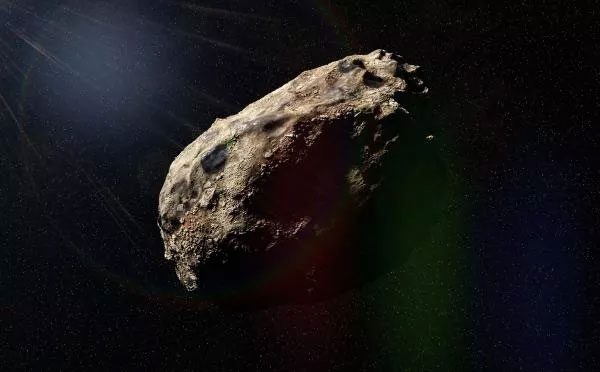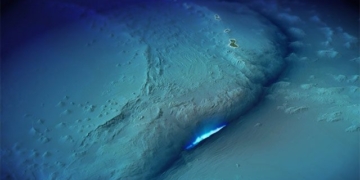NASA announced that an asteroid with a diameter more than three times that of the Great Pyramid of Giza in Egypt passed by Earth yesterday.

Simulation of the asteroid passing by Earth.
The asteroid, named 2015 DR215, is classified as a Potentially Hazardous Asteroid (PHA), according to NASA. However, 2015 DR215 is not expected to collide with Earth in the near future. NASA’s Center for Near-Earth Object Studies (CNEOS) reported that this celestial body is approaching Earth. Even at its closest distance, 2015 DR215 will still be about 6.6 million kilometers away from our planet, more than 17 times the distance to the Moon.
CNEOS estimates the maximum diameter of 2015 DR215 to be 488 meters, which is 3.5 times the height of the Great Pyramid of Giza (138 meters). The minimum diameter of the asteroid is approximately 220 meters. 2015 DR215 travels at a speed of about 29,773 km/h as it passes by Earth at 1:41 PM on March 11.
2015 DR215 orbits the Sun faster than Earth. This is common for asteroids that come relatively close to Earth. In 2028, 2015 DR215 is expected to pass by our planet once again, according to CNEOS data.
An asteroid is classified as a PHA if it approaches Earth within 7.5 million kilometers or has a diameter of 150 meters or more. Astronomers are monitoring thousands of asteroids in the solar system, including many PHAs, to ensure that no celestial bodies pose a threat to Earth. As of March 7, approximately 28,000 near-Earth asteroids have been detected, with 1,000 of those having a diameter greater than 1 kilometer.
Collisions between asteroids and Earth have occurred multiple times in the past. In 2013, a house-sized meteor exploded over Chelyabinsk, Russia, releasing energy equivalent to 440,000 tons of TNT, along with shockwaves that shattered windows over an area of 518 square kilometers.


















































